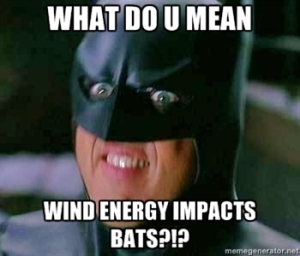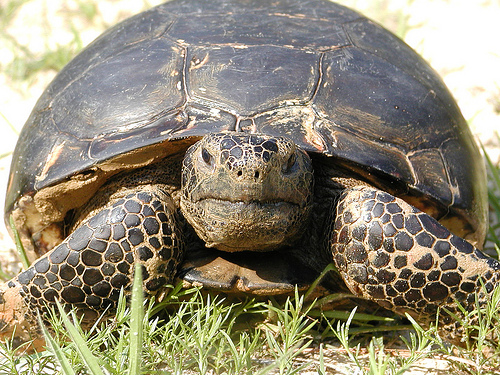Guest blogger Jemma Denny discusses a large Multi-Species Habitat Conservation Plan being developed for impacts to endangered species from wind energy in the Midwest.
Parts of Illinois, Indiana, Iowa, Michigan, Minnesota, Missouri, Ohio and Wisconsin could be eligible for ESA Take under a draft “Midwest Wind Energy Multi-Species Habitat Conservation Plan Within Eight-State Planning Area” (MSHCP) currently open for public comment. The MSHCP involves several bat species, numerous birds and some really interesting approaches to permits — there is a ‘Programatic’ and a ‘Template’ design being considered. With the Programmatic option,
“Under the template approach, the Service would issue individual ITPs to applicants that agree to implement the MSHCP, whereas under the programmatic approach, each State agency would apply for and receive an ITP and would issue certificates of inclusion to wind energy companies that agreed to implement the MSHCP at their facility.”
Wind entities are just some of numerous partners: collectively they’re called WEBAT or Wind Energy Bat Action Team and they’re represented by American Wind Energy Association, the national trade trade industry. Along with the Fish and Wildlife and 8 state conservation agencies, the Conservation Fund looks to be setting themselves up to mitigate these wind impacts:
“The Conservation Fund would develop a regional framework of conservation lands to be used as a decision support tool for the selection of appropriate mitigation options required for offsetting incidental take of the ‘covered species’ “
Is there room for budding conservation banks as mitigation for this plan? I’m sure there are plenty of private landowners across the Midwest with one or more of these species, that might be interested in staying on their land and conserving species, and who might be interested in conservation banking. There is precedent for this idea:
- a 2009 Indiana bat habitat enhancement plan developed for surface mining impacts to habitat noted “buying credits from an approved Indiana bat conservation bank” as appropriate off-site mitigation.
- a 2009 American Wind and Wildlife Association-commissioned report discussed scenarios including conservation banking for wind energy mitigation
- There is a pilot habitat bank for Indiana bats in the Hudson Valley region (p.15).
Either way, those with permits under the MSHCP would be covered under Section 7 and NEPA, avoid further FWS consultations, and receive a ‘no surprises’ assurance as well. But none of this will go ahead without public comment and consideration – of both the draft and the EIS to follow. Make your comments on or before October 1, 2012.
Federal Register notice of the draft MSHCP
US FWS Draft Indiana Bat Recovery Plan










